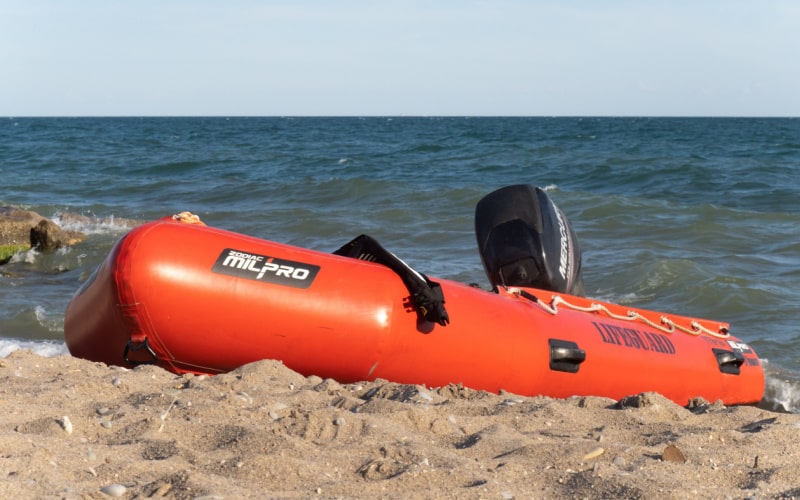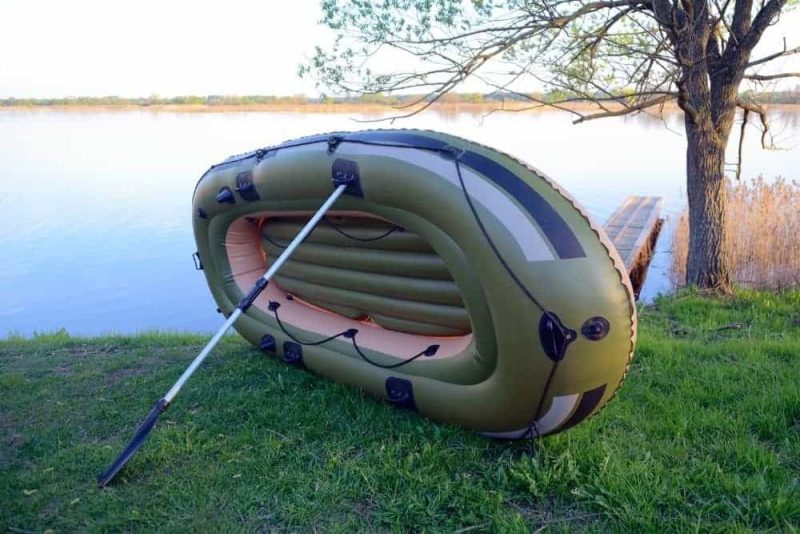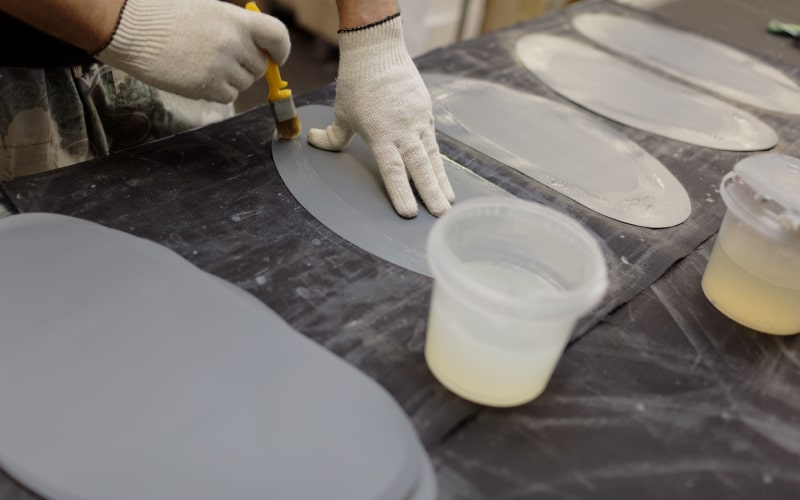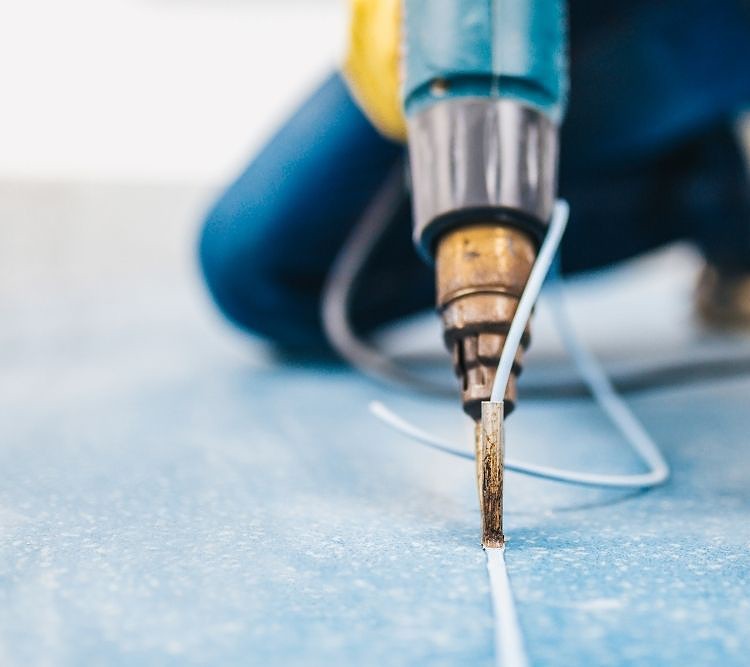There are many reasons anglers and other boat enthusiasts choose to buy inflatable boats over traditional boats.
They are affordable, lightweight, easy to maintain, and convenient to store.
Additionally, they’re more eco-friendly than traditional boats. They can use electric motors and cut back on exhaust emissions and are less likely to impact marine life because they remain on the surface of the water.
With all these benefits, many people wonder how exactly these boats are constructed. Some even want to build their own inflatable boats.
No matter which camp you’re in, we’ve got your covered.
This guide breaks down the manufacturing process, provides tips and tricks on how to build your own inflatable boat, and provides YouTube videos so that you can understand the process perfectly.
Read on to learn all about the inflatable boat building process.
Table of Contents
What Are Inflatable Boats Made Of?
Before delving into the manufacturing process for inflatable boats, you need to know which materials are used in their construction.
This is especially important if you’re learning how to build one from scratch.
Hypalon (Chlorosulfonated Polyethylene/CSM and Neoprene)

One of the most durable (and thus preferred) materials used in building inflatable boats is a mixture of CSM and Neoprene. This combination is commonly known as Hypalon because of its trademark by DuPont.
While DuPont discontinued Hypalon in June 2009, the material is still commonly known by the name.
The reason Hypalon is still so popular is because of how durable it is. It is highly UV-resistant, giving it an edge over materials like PVC.
It can also survive chemical spills, can be easily patched if it requires any repairs, and last for up to 15 to 20 years if properly maintained.
However, producing this material releases toxic fumes in the air and uses lead-based components.
Polyvinyl Chloride (PVC)

While PVC isn’t as durable as Hypalon, it is abrasion-resistant and can survive wear and tear. It’s also much more affordable than Hypalon.
However, it isn’t as well-regarded as Hypalon or PU because it’s not as UV resistant as its counterparts. It also lasts for a shorter duration, with PVC inflatable boats lasting 8-10 years.
Polyurethane (PU)
Polyurethane isn’t as popular as PVC and Hypalon but has been gaining more recognition over the years.
This is mostly because it is the most abrasion-resistant material of the three and the most puncture-resistant. Because it’s more environmentally friendly than Hypalon and PVC, it is preferred by those who value greener options.
However, it does have some disadvantages – it is expensive and more difficult to repair than the other two options.
The Inflatable Boat Manufacturing Process
Manufacturing differs based on the material used. PVC and PU boats can be both heat-welded and glued, but Hypalon boats can only be glued together.
Using Glue and Adhesives

Using adhesives is not only easy but also the only method that works for all three materials. Please note that durability depends on the strength of the adhesive used, because exposure to UV rays and rough weather conditions may result in degradation of the adhesive.
For optimal results, use a strong adhesive that can withstand the test of time. The Seamax Marine Grade Adhesive Kit comes in both Hypalon and PVC versions, whereas Nauticol Glue and HH-66 Vinyl Cement are restricted to PVC and PU inflatables.
It should be noted that glue seams aren’t as strong as welded seams since the application of glue is inconsistent. Hydrolysis also results in degradation over time.
Adhesives are also criticized for their harmful effect on the environment. While solvent-based adhesives impact air quality, solvent-free adhesives aren’t the solution – they release chemicals into the water that can harm marine life.
Even as new and less harmful adhesives have come to market, they aren’t completely biodegradable.
Those building their own inflatables should note that inhaling adhesives is highly toxic and may cause respiratory issues, lung disease, and asthma.
Hypalon/CSM
When it comes to Hypalon, the adhesive used acts as a chemical bond. For maximum strength, the glue has to absorb into the fabric which requires scoring.
Once the material is scored, the glue should be applied to each piece and the two pieces should be rolled together.
PVC and PU
In PVC and PU construction, adhesives act as a mechanical bond. The material does not have to be scored as the liquid seems into the material by itself.
When dry, the two pieces of fabric are bonded.
Welding

Welded seams are not only more consistent than glued seams, but they’re also stronger. Because the seams are welded and form a direct bond, there’s no degradation over time.
Unlike glued seams, welded seams are also easier to repair. Welded seams are also superior to glued seams because they’re not toxic or harmful to the environment.
If safety precautions are taken, welding isn’t harmful and doesn’t cause chemicals to leak into the water.
Check out this video for an in-depth look at the welding process:
High-Frequency Welding
Before hot air welding came along, high-frequency welding was the welding method of choice. High-frequency welding is said to have led to the development of hot air welding.
When using high-frequency welding, two materials are bonded together through an electromagnetic field. This is done by using high-frequency voltage to meld the materials.
The resulting heat results in the pieces of fabric melting and bonding. The process is also convenient since it’s extremely fast and only takes seconds.
However, because the setup of machines takes longer and more than one machine is used simultaneously, this process can get very costly.
The seams are also more noticeable than they are when using hot air welding and aren’t as strong.
Because of this, hot air welding is the main type of welding used today.
Hot Air Welding
Hot air welding is not only cost-effective but also creates a stronger bond than high-frequency welding.
The two pieces of fabric are heated until they begin to melt. They are then rolled together and bonded.
To see how inflatable boats are made, check out this YouTube video.
How to Make an Inflatable Boat
If you want to know how to build your own inflatable boat, the following channel may be useful. The 4-part series on the construction of a PVC inflatable shows the entire process from start to finish.
1. Picking a Material

Using our comparison of the different materials, you must first pick a material that is most suitable for your needs. This is the first step in making your own inflatable boat.
2. Designing and Cutting Out the Pieces
Whether you’re using an existing design or designing your boat from scratch, you need to cut out the pieces beforehand and label them so that you know where each piece goes.
It’s better to take the time to plan out the process beforehand than be stuck with mistakes and having to do extra work.
3. Choosing Between Adhesives and Welding

The information on adhesives and welding that we have provided should help you make a decision on which method to use.
Of course, not everyone has a welding machine lying around. If you can access one, welding is definitely the way to go because of its durability and safety.
However, not having a welding machine shouldn’t stop you from building your own inflatable boat. Simply opt for one of the adhesives we have suggested and opt for gluing seams instead.
4. Assembling Them
Once you’ve chosen the method, all that’s left to do is assemble your boat and inflate it. Then you’re ready to take it out on the water.
Final Thoughts
Whether you were curious about the manufacturing process or you’re doing research on how to build an inflatable boat for yourself, we hope that this guide has been helpful.
If you do decide to make your own inflatable boat, we’d love to hear from you in the comments below!

I created this site to help people – to help you – with your boat problems. Instead of helping one person at a time, I want this website to be the “one-stop-shop” for everyone’s boating concerns. Read more.


Wink
Sunday 30th of July 2023
Steve,
I'm exploring inflatable construction and this article was the best I've found for explaining various options and trade offs, thanks!
In the "Hypalon Discontinued"[1] you mention "TPU is a superior material". Also this search[2] provides results which seem to agree and this search[3] does provide results that they are different.
Question: Should I be looking for TPU or PU fabrics for inflatables?
[1]:https://anchor.travel/why-was-hypalon-discontinued/ [2]:https://www.google.com/search?q=TPU+fabric+for+inflatable+boats [3]:https://www.google.com/search?q=thermoplastic+polyurethane+vs+polyurethane